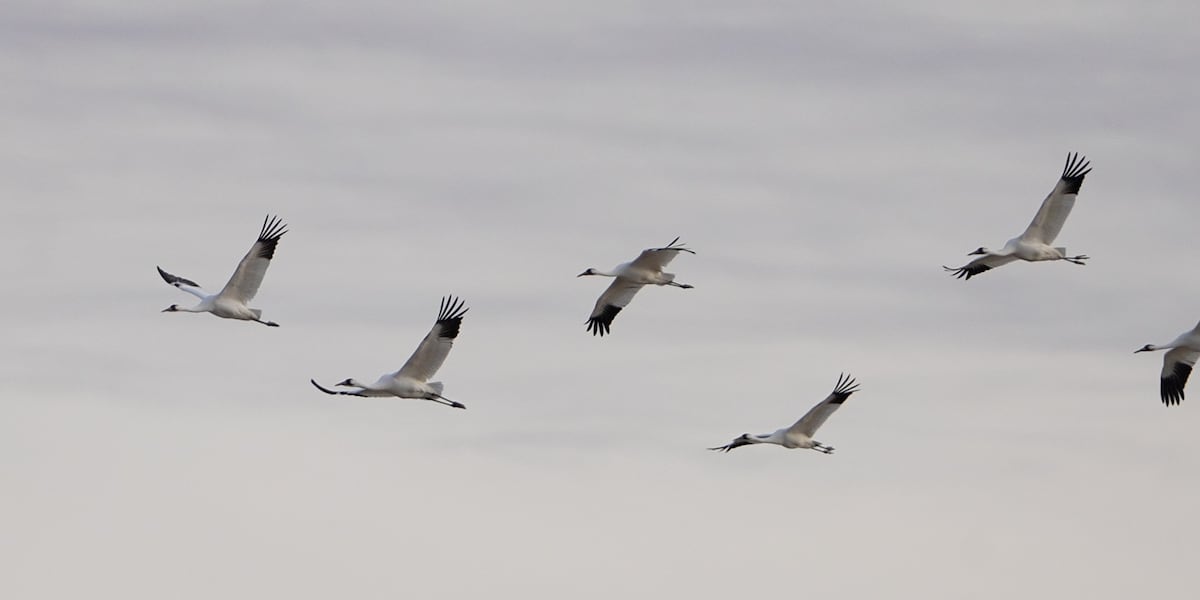BISMARCK, N.D. (KFYR) – Whooping cranes are listed as an endangered species in the United States, which means they are protected because of their low population.
“So last year we actually set a record high number on the wintering ground survey of 557 individuals. And so, that’s up the highest recorded population level ever recorded during that survey. And that survey is done down on the coast of Texas,” said John Palarski, NDGF migratory game bird management supervisor.
Whooping cranes will start showing up in North Dakota sometime in October and stay as long as the weather allows.
“Nearly all of the whooping cranes in the population in that Wood Buffalo population are migrating through North Dakota. And it’s a really important stopover site, both in the fall and also in the spring whooping cranes are spending considerable time in the state during their migration and refueling,” said Palarski.
Wetland habitats are what draw whooping cranes to spend time in North Dakota during spring and fall migrations.
“Unfortunately, those wetlands are starting to decline a bit in the state. But those shallow wetlands are really important for whooping cranes,” said Palarski.
Whooping cranes and sandhill cranes will sometimes migrate together.
“So hunters definitely need to be aware that whooping cranes are going to be around at about the same time as sandhill cranes if they’re pursuing sandhills,” said Palarski.
Whooping cranes will often get confused with other bird species when migrating through North Dakota.
“Whooping cranes commonly get confused with snow geese in some instances. Pelicans in some instances. Also, sandhill cranes too. The one difference obviously is their size, differentiating them amongst a lot of species. They are quite a bit bigger than a lot of sandhill cranes that we have migrating through the state. They’re approximately five feet tall, which is considerably larger than some of the sandhills that we have can be anywhere from 2 to 3ft. Obviously, a lot larger than pelicans even, and a lot larger than our snow geese too, although they have a generally white body with black tips on the end of their wings, it’s just the wingspan that they have is so much larger than any other species that we have moving through the state,” said Palarski.
If you’re lucky enough to see a whooping crane in North Dakota, report it to the North Dakota Game and Fish Department at 328-6300.
Copyright 2025 KFYR. All rights reserved.

